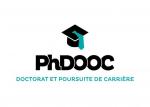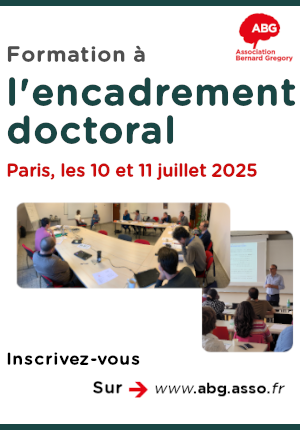Pression gastrique et reflux après sleeve gastrectomie : approche morphométrique, biomécanique et modélisation numériqu // Gastric Pressures and Reflux after Sleeve Gastrectomy: Morphological, Biomechanical and Numerical Approaches
|
ABG-129921
ADUM-63223 |
Thesis topic | |
| 2025-03-25 | Public funding alone (i.e. government, region, European, international organization research grant) |
Aix Marseille Université
MARSEILLE Cedex 20 - France
Pression gastrique et reflux après sleeve gastrectomie : approche morphométrique, biomécanique et modélisation numériqu // Gastric Pressures and Reflux after Sleeve Gastrectomy: Morphological, Biomechanical and Numerical Approaches
biomécanique, obesité, imagerie médicale, machine learning, classification, pression gastrique
biomechanics, obesity, medical imaging, machine learning, classification, gastric pressure
biomechanics, obesity, medical imaging, machine learning, classification, gastric pressure
Topic description
L'obésité représente un enjeu majeur de santé publique, avec une prévalence croissante à l'échelle mondiale. La Sleeve gastrectomie (SG) est l'intervention bariatrique la plus courante, permettant une perte pondérale efficace grâce à une réduction significative du volume gastrique. Toutefois, des complications post-opératoires à distance de l'intervention, notamment le reflux gastro-œsophagien, peuvent survenir. Ces complications sont influencées par divers facteurs, dont la morphométrie de l'estomac et l'élasticité de sa paroi. Leur compréhension pourrait améliorer la planification chirurgicale et le suivi post-opératoire.
L'objectif de cette thèse est d'analyser l'impact des modifications morphologiques et mécaniques de l'estomac sur la répartition des pressions gastriques et le reflux post-SG. Trois axes de recherche sont développés :
Analyse morphométrique : L'imagerie médicale (scanners) sera utilisée pour classifier les morphologies gastriques avant et après SG. La segmentation automatique des images CT-scan permettra d'identifier les zones anatomiques (fundus, corpus, antre) et d'extraire des métriques clés (courbures, jonctions anatomiques). L'intelligence artificielle, via des algorithmes de machine learning, facilitera cette classification et comparera l'anatomie post-opératoire avec une configuration idéale de la sleeve.
Analyse biomécanique : L'élasticité de la paroi gastrique sera étudiée à l'aide de données obtenues lors d'endoscopies pré-opératoires. Un suivi semi-automatisé des déformations lors du gonflement de l'estomac sera mis en place, accompagné de mesures simultanées de pression intra-gastrique grâce à un dispositif adapté. Cette approche permettra d'établir des courbes pression/déformation caractérisant les propriétés biomécaniques de la paroi gastrique.
Modélisation numérique : Un modèle éléments finis de l'estomac pré et post opératoire sera développé pour simuler les champs de pression et leur influence sur le reflux. Les modèles existants, souvent simplifiés et basés sur des données porcines, seront améliorés en intégrant les caractéristiques morphologiques et biomécaniques humaines obtenues dans les précédentes analyses.
Ce travail, à la croisée de la médecine, de la biomécanique et de l'intelligence artificielle, vise à mieux comprendre les facteurs influençant le reflux post-SG et à optimiser la prise en charge chirurgicale des patients obèses.
------------------------------------------------------------------------------------------------------------------------------------------------------------------------
------------------------------------------------------------------------------------------------------------------------------------------------------------------------
Obesity is a major public health issue, with a growing prevalence worldwide. Sleeve gastrectomy (SG) is the most common bariatric procedure, enabling effective weight loss through a significant reduction in gastric volume. However, post-operative complications can occur, particularly gastro-oesophageal reflux. These complications are influenced by various factors, including the morphometry of the stomach and the elasticity of its wall. Understanding them could improve surgical planning and post-operative follow-up.The aim of this thesis is to analyse the impact of morphological and mechanical changes in the stomach on the distribution of gastric pressures and post-GAS reflux. Three lines of research are developed:
Morphometric analysis: Medical imaging (scans) will be used to classify gastric morphologies before and after GI. Automatic segmentation of CT-scan images will be used to identify anatomical zones (fundus, corpus, antrum) and extract key metrics (curvatures, anatomical junctions). Artificial intelligence, via machine learning algorithms, will facilitate this classification and compare the post-operative anatomy with an ideal sleeve configuration.
Biomechanical analysis: The elasticity of the gastric wall will be studied using data obtained during pre-operative endoscopies. Semi-automated monitoring of deformations during inflation of the stomach will be set up, accompanied by simultaneous measurements of intra-gastric pressure using a suitable device. This approach will make it possible to establish pressure/deformation curves characterising the biomechanical properties of the gastric wall.
Numerical modelling: A finite element model of the pre- and post-operative stomach will be developed to simulate pressure fields and their influence on reflux. Existing models, which are often simplified and based on pig data, will be improved by incorporating the human morphological and biomechanical characteristics obtained in previous analyses.
This work, at the crossroads of medicine, biomechanics and artificial intelligence, aims to provide a better understanding of the factors influencing post-GAS reflux and to optimise the surgical management of obese patients.
------------------------------------------------------------------------------------------------------------------------------------------------------------------------
------------------------------------------------------------------------------------------------------------------------------------------------------------------------
Début de la thèse : 01/10/2025
L'objectif de cette thèse est d'analyser l'impact des modifications morphologiques et mécaniques de l'estomac sur la répartition des pressions gastriques et le reflux post-SG. Trois axes de recherche sont développés :
Analyse morphométrique : L'imagerie médicale (scanners) sera utilisée pour classifier les morphologies gastriques avant et après SG. La segmentation automatique des images CT-scan permettra d'identifier les zones anatomiques (fundus, corpus, antre) et d'extraire des métriques clés (courbures, jonctions anatomiques). L'intelligence artificielle, via des algorithmes de machine learning, facilitera cette classification et comparera l'anatomie post-opératoire avec une configuration idéale de la sleeve.
Analyse biomécanique : L'élasticité de la paroi gastrique sera étudiée à l'aide de données obtenues lors d'endoscopies pré-opératoires. Un suivi semi-automatisé des déformations lors du gonflement de l'estomac sera mis en place, accompagné de mesures simultanées de pression intra-gastrique grâce à un dispositif adapté. Cette approche permettra d'établir des courbes pression/déformation caractérisant les propriétés biomécaniques de la paroi gastrique.
Modélisation numérique : Un modèle éléments finis de l'estomac pré et post opératoire sera développé pour simuler les champs de pression et leur influence sur le reflux. Les modèles existants, souvent simplifiés et basés sur des données porcines, seront améliorés en intégrant les caractéristiques morphologiques et biomécaniques humaines obtenues dans les précédentes analyses.
Ce travail, à la croisée de la médecine, de la biomécanique et de l'intelligence artificielle, vise à mieux comprendre les facteurs influençant le reflux post-SG et à optimiser la prise en charge chirurgicale des patients obèses.
------------------------------------------------------------------------------------------------------------------------------------------------------------------------
------------------------------------------------------------------------------------------------------------------------------------------------------------------------
Obesity is a major public health issue, with a growing prevalence worldwide. Sleeve gastrectomy (SG) is the most common bariatric procedure, enabling effective weight loss through a significant reduction in gastric volume. However, post-operative complications can occur, particularly gastro-oesophageal reflux. These complications are influenced by various factors, including the morphometry of the stomach and the elasticity of its wall. Understanding them could improve surgical planning and post-operative follow-up.The aim of this thesis is to analyse the impact of morphological and mechanical changes in the stomach on the distribution of gastric pressures and post-GAS reflux. Three lines of research are developed:
Morphometric analysis: Medical imaging (scans) will be used to classify gastric morphologies before and after GI. Automatic segmentation of CT-scan images will be used to identify anatomical zones (fundus, corpus, antrum) and extract key metrics (curvatures, anatomical junctions). Artificial intelligence, via machine learning algorithms, will facilitate this classification and compare the post-operative anatomy with an ideal sleeve configuration.
Biomechanical analysis: The elasticity of the gastric wall will be studied using data obtained during pre-operative endoscopies. Semi-automated monitoring of deformations during inflation of the stomach will be set up, accompanied by simultaneous measurements of intra-gastric pressure using a suitable device. This approach will make it possible to establish pressure/deformation curves characterising the biomechanical properties of the gastric wall.
Numerical modelling: A finite element model of the pre- and post-operative stomach will be developed to simulate pressure fields and their influence on reflux. Existing models, which are often simplified and based on pig data, will be improved by incorporating the human morphological and biomechanical characteristics obtained in previous analyses.
This work, at the crossroads of medicine, biomechanics and artificial intelligence, aims to provide a better understanding of the factors influencing post-GAS reflux and to optimise the surgical management of obese patients.
------------------------------------------------------------------------------------------------------------------------------------------------------------------------
------------------------------------------------------------------------------------------------------------------------------------------------------------------------
Début de la thèse : 01/10/2025
Funding category
Public funding alone (i.e. government, region, European, international organization research grant)
Funding further details
Concours pour un contrat doctoral
Presentation of host institution and host laboratory
Aix Marseille Université
Institution awarding doctoral degree
Aix Marseille Université
Graduate school
659 Recherches Biomédicales
Candidate's profile
Sciences pour l'ingénieur en mécanique, biomécanique ou en intelligence artificielle
Engineering sciences in mechanics, biomechanics or artificial intelligence
Engineering sciences in mechanics, biomechanics or artificial intelligence
2025-06-30
Apply
Close
Vous avez déjà un compte ?
Nouvel utilisateur ?
More information about ABG?
Get ABG’s monthly newsletters including news, job offers, grants & fellowships and a selection of relevant events…
Discover our members
 TotalEnergies
TotalEnergies  Généthon
Généthon  Laboratoire National de Métrologie et d'Essais - LNE
Laboratoire National de Métrologie et d'Essais - LNE  Ifremer
Ifremer  MabDesign
MabDesign  Groupe AFNOR - Association française de normalisation
Groupe AFNOR - Association française de normalisation  Nokia Bell Labs France
Nokia Bell Labs France  ADEME
ADEME  Aérocentre, Pôle d'excellence régional
Aérocentre, Pôle d'excellence régional  ANRT
ANRT  ONERA - The French Aerospace Lab
ONERA - The French Aerospace Lab  Institut Sup'biotech de Paris
Institut Sup'biotech de Paris  Tecknowmetrix
Tecknowmetrix  CESI
CESI  CASDEN
CASDEN  ASNR - Autorité de sûreté nucléaire et de radioprotection - Siège
ASNR - Autorité de sûreté nucléaire et de radioprotection - Siège  MabDesign
MabDesign  PhDOOC
PhDOOC  SUEZ
SUEZ







